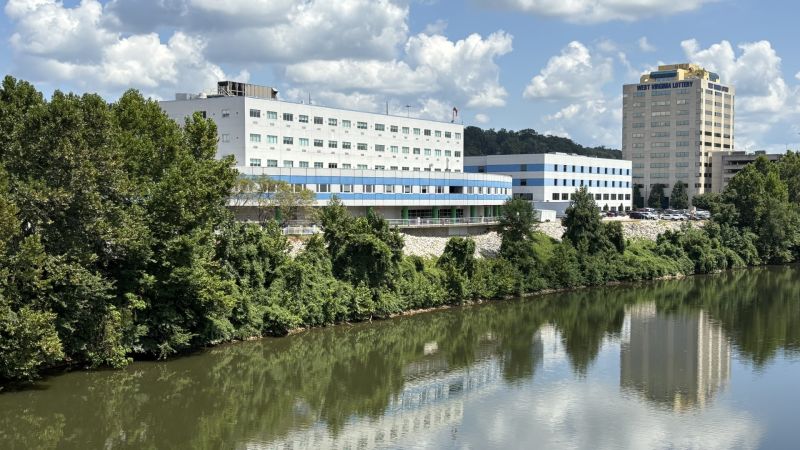Louisville, Tennessee KFF Health News —
When a big storm hits, Peninsula Hospital could be underwater.
At this decades-old psychiatric hospital on the edge of the Tennessee River, an intense storm could submerge the building in 11 feet of water, cutting off all roads around the facility, according to a sophisticated computer simulation of flood risk.
Aurora, a young woman who was committed to Peninsula as a teenager, said the hospital sits so close to the river that it felt like a moat keeping her and dozens of other patients inside. KFF Health News agreed not to publish her full name because she shared private medical history.
“My first feeling is doom,” Aurora said as she watched the simulation of the river rising around the hospital. “These are probably some of the most vulnerable people.”
Covenant Health, which runs Peninsula Hospital, said in a statement it has a “proactive and thorough approach to emergency planning” but declined to provide details or answer questions.
Peninsula is one of about 170 American hospitals, totaling nearly 30,000 patient beds from coast to coast, that face the greatest risk of significant or dangerous flooding, according to a months-long KFF Health News investigation based on data provided by Fathom, a company considered a leader in flood simulation. At many of these hospitals, flooding from heavy storms has the potential to jeopardize patient care, block access to emergency rooms, and force evacuations. Sometimes there is no other hospital nearby.
Aurora, a former Peninsula Hospital patient, looks upon the Tennessee psychiatric hospital where she was committed as a teenager. KFF Health News agreed not to publish her full name because she shared private medical history. Brett Kelman/KFF Health News
Much of this risk to hospitals is not captured by flood maps issued by the Federal Emergency Management Agency, which have served as the nation’s de facto tool for flood estimation for half a century, despite being incomplete and sometimes decades out of date. As FEMA’s maps have become divorced from the reality of a changing climate, private companies like Fathom have filled the gap with simulations of future floods. But many of their predictions are behind a paywall, leaving the public mostly reliant on free, significantly limited government maps.
“This is highly concerning,” said Caleb Dresser, who studies climate change and is both an emergency room doctor and a Harvard University assistant professor. “If you don’t have the information to know you’re at risk, then how can you triage that problem?”
The deadliest hospital flooding in modern American history occurred 20 years ago during Hurricane Katrina, when the bodies of 45 people were recovered from New Orleans’ Memorial Medical Center, including some patients whom investigators suspected were euthanized. More flooding deaths were narrowly avoided one year ago when helicopters rescued dozens of people as Hurricane Helene engulfed Unicoi County Hospital in Erwin, Tennessee.
Rebecca Harrison, a paramedic, called her children from the Unicoi roof to say goodbye.
“I was scared to death, thinking, ‘This is it,’
Continue Reading on CNN
This preview shows approximately 15% of the article. Read the full story on the publisher's website to support quality journalism.
